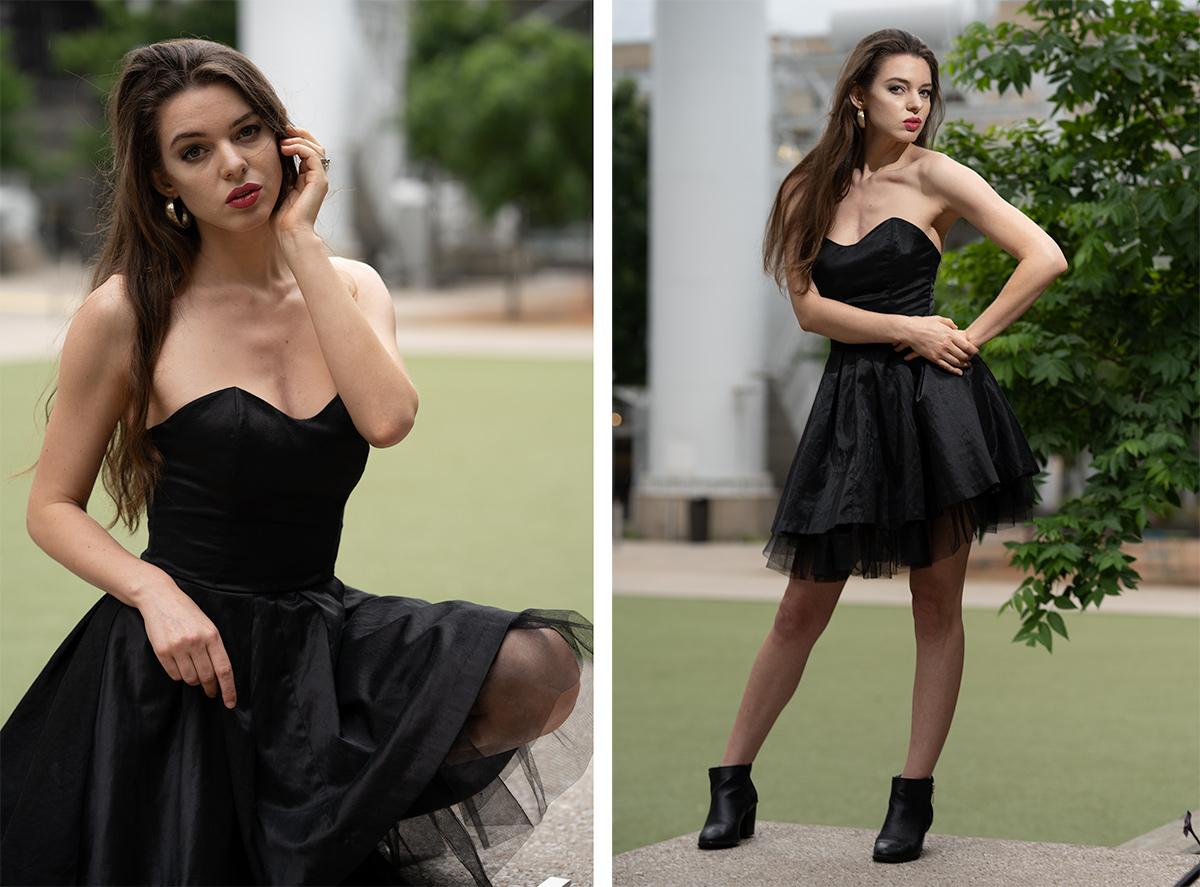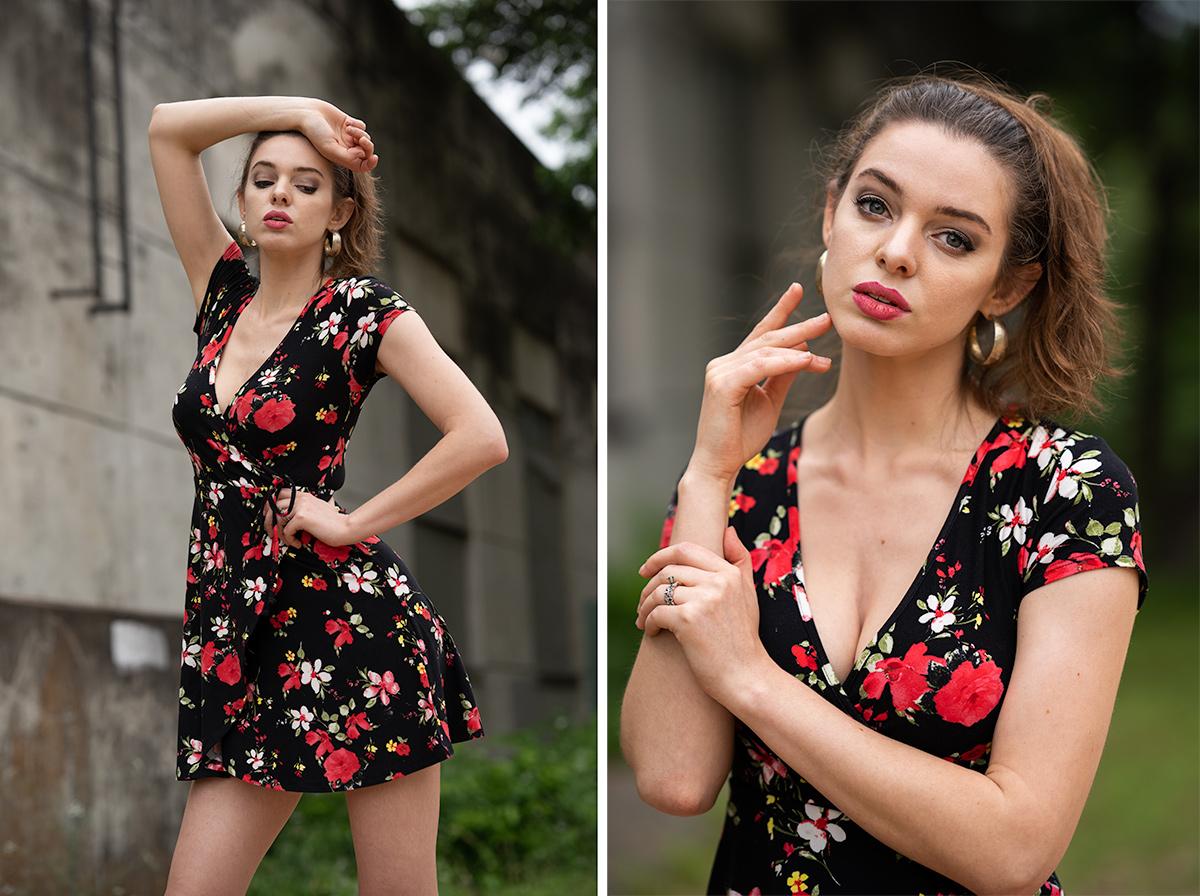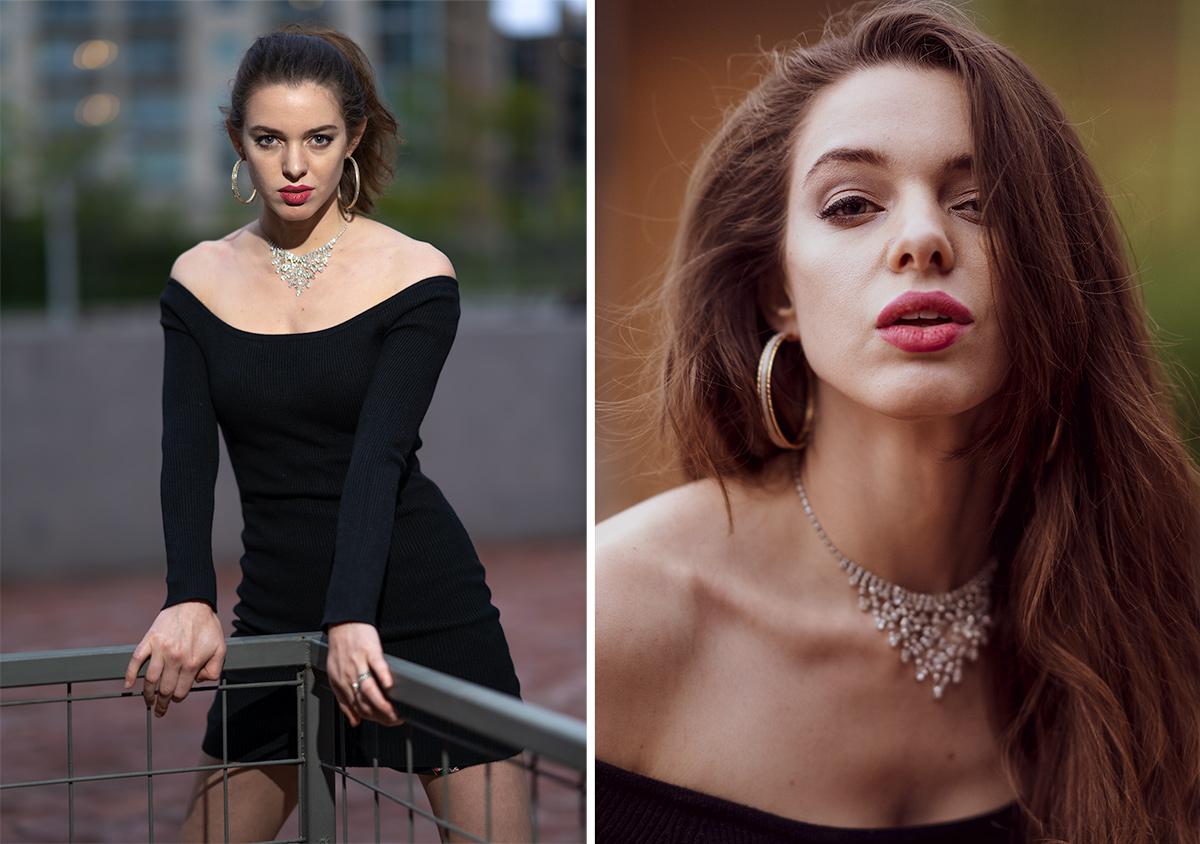I prefer not to use flash or photo reflectors for daylight photography. But conditions like location and weather aren’t always favorable for natural light only photography. In this video, I demonstrate four different ways I dealt with the challenge of poor weather. Specifically, I’ll show you how I create better flash portraits on overcast days.
Unmodified Flash in Flat Lighting
In the first example, we tackle the heavily diffused, overcast lighting with common sense camera settings. In situations like this, you can definitely make use of exposure (and later, other adjustments in post) to produce adequate images.
To add a bit of pop to our portraits, we can use a simple, unmodified speedlight. I’ve placed mine on a stand just a few feet away from the model. For this set (and the rest of the flash examples during this shoot), I’m using the Godox TT685s and the X1Ts wireless transmitter. The flash remains in manual mode at between 1/128 and 1/64 power. My aperture is f/2.8 with a shutter speed of 1/250 and ISO of 100.

The results are good, but the strong shadows give away the fact that we’re using a bare flash setup. This is fine unless you want the lighting to look more natural. Something we’ll attempt at the next location.
Softbox for Flash Portraits
In our next example, we’re going to use a softbox. The goal is to get a more natural look than we did with unmodified flash.
This location is a bit darker, and for the ambient exposure I want, I boost the ISO to 400. The shutter and f-stop remain the same. The softbox we’re using is the 24×24″ Lastolite Ezybox.

You can see our softbox produces less contrast than straight flash. And as you’ll see in the video, I positioned the softbox somewhat farther away from the subject than I normally would. This, to get a wider spread of light, so I could capture more than a head-and-shoulders shot.
Natural Light, Found Reflectors
Even though it was overcast, a change in location helped our flat lighting situation. A light-colored building (like we had across from us) or a light-colored ground surface can help bounce some of that ambient light back up and around your subject. And we managed to do that here and produced some nice results. No flash illumination was necessary.

Dramatic Flash Portraits, Cinematic Looks
As evening approached the heavy overcast just made the skies all that much darker. But we took advantage of that to create flash portraits with a dramatic, cinematic look using the unmodified, bare flash approach again. We also tried a few shots without flash. For these, our settings were ISO 640, 1/250 sec. at f/1.4. The results were very natural and cinematic.

Both the flash portraits and the non-flash versions were shot within 10 mins of each other. This just goes to show you how much variety you can achieve with some simple camera adjustments and the decision of whether or not to use a flash. Lots of different looks are possible even under the poorest natural lighting conditions.
Loved this tip? Here's something else you might like:
👉 Free 10-Min. Guide to Off-Camera Flash, Quickstart Bundle


